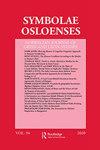The Greek Tragic Trimeter as a Prosodic Milieu
IF 0.1
3区 历史学
0 CLASSICS
引用次数: 0
Abstract
The iambic trimeter has been studied extensively, but mostly from a descriptive point of view. This article places the discussion of the tragic trimeter in relation to the functionalist tradition of the study of rhythm and syntax in verse. It presents new data on the interdependence of rhythm and word boundary placement in the tragic trimeter (based on the work of Attic tragic playwrights and the Byzantine Christus Patiens), focusing on the remarkable stability of word placement patterns and the salience of the underlying binary structure of the iambic rhythm toward the end of the line. In this light, the restrictions on word boundaries in the last metron, most importantly Porson’s bridge, are argued to have a rhythmical explanation. Furthermore, based on a juxtaposition of a number of prosodic criteria, including the repertories of word shapes (rhythmic words) in various genres and authors, the study argues that the tragic iambic trimeter represents a distinctive prosodic milieu, different from both prose (and, very likely, spoken speech) and melic poetry.希腊悲剧三重奏作为一支韵律军队
抑扬格三聚体已经被广泛研究,但大多是从描述性的角度。本文将悲剧三聚体的讨论与功能主义研究诗歌节奏和句法的传统联系起来。它提供了关于悲剧三聚体中节奏和单词边界放置的相互依赖性的新数据(基于阿提克悲剧剧作家和拜占庭的克里斯图斯·佩因斯的作品),重点关注单词放置模式的显著稳定性和抑扬格节奏的底层二元结构在行尾的突出性。有鉴于此,最后一个地铁中对单词边界的限制,最重要的是波尔森大桥,被认为是有节奏的解释。此外,基于许多韵律标准的并置,包括各种流派和作者的词形(韵律词)的库,该研究认为,悲剧抑扬格三聚体代表了一个独特的韵律环境,不同于散文(很可能还有口语)和美利诗。
本文章由计算机程序翻译,如有差异,请以英文原文为准。
求助全文
约1分钟内获得全文
求助全文

 求助内容:
求助内容: 应助结果提醒方式:
应助结果提醒方式:


